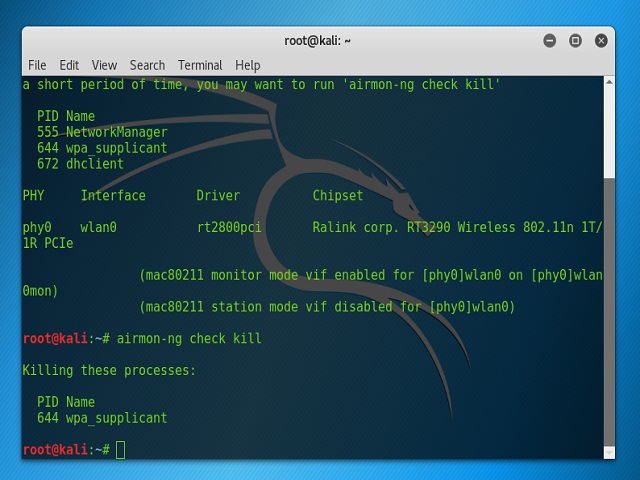

Start capturing raw 802.11 frames on the newly created interface running on monitor mode: Observe the new interface created wlp9s0monĩ: wlp9s0mon: mtu 1500 qdisc mq state UNKNOWN group default qlen 1000 (mac80211 station mode vif disabled for wlp9s0) (mac80211 monitor mode vif enabled for wlp9s0 on wlp9s0mon)


Phy0 wlp9s0 ? Qualcomm Atheros AR9485 Wireless Network Adapter (rev 01) To ensure devices are unblocked you must install rfkill. Your kernel supports rfkill but you don't have rfkill installed. Inet6 fe80::bf7e:dc5d:337:131c/64 scope linkĮnable monitor mode on that wireless interface. $ docker run -it -net="host" -privileged -name aircrack mykali inside the container, identify your wireless interface:ģ: wlp9s0: mtu 1500 qdisc mq state UP group default qlen 1000 Now that you have all the bits required to get started, spin up the container: Here we are using official kali-linux docker image, then installing tools required.Ĭreate a docker image using above Dockerfile So lets get started Install docker for your system:Ĭreate Dockerfile which looks like this: $ cat Dockerfile Containers give you isolation similar to VM( not exactly) and since container is again a process mapped onto your operating system it has access to everything on your machine(if run in privileged mode) and container can also see the host’s network stack if run with specific flag( -net="host"). To get around this problem, and use your host machine’s interface, we can use containers. But then you need to have one to utilize it. The VM can get a wireless interface using USB connected wifi device. So VM never deals with how the host is connected to outside world, be it wired or wireless connection. The way it works VMs get connected to a bridge setup by your hypervisor via ethernet interface. This is because VM does not get direct access to the host’s wifi card. It was all good, until the point when I was not able to run wireless pentesting tools from VM. I use a Fedora machine as my primary desktop, I can install some of those tools locally, but then I wanted to keep these things separate. I wanted to use pentesting tools provided in Kali-Linux. Note: This is updated version of my previous blog, which goes by the similar title.


 0 kommentar(er)
0 kommentar(er)
